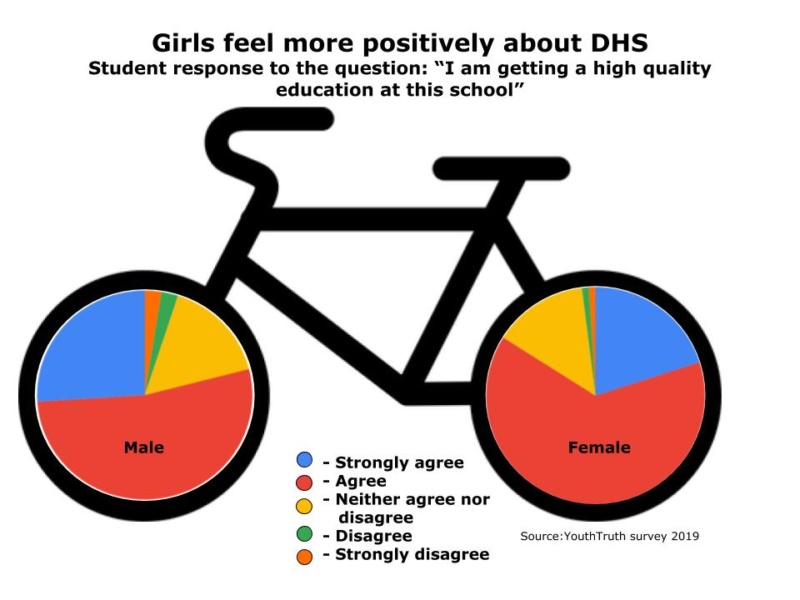Brain development occurs later for boys, study says
PHOTO: Some experts have found that female students are more likely to stay focused in class than male students (Photo Illustration).
By Grace Kishiyama,
BlueDevilHUB.com Staff–
After lunch, students file into classroom S-01. The bell rings and within minutes the teacher starts lecturing.
To the far left of the classroom sits a boy with his head down on his desk, eyes closed with an unmoving pencil in hand. Diagonal from him sits a girl wearing an attentive look on her face, soaking in and writing down everything the teacher is saying.
Even though girls and boys may be the same age, their brains are often at different developmental stages, MRI studies show. Because of the differences in maturity levels and brain development, it makes sitting still, listening and not talking harder for boys than for girls, experts say.
“I think teachers are always working to figure what each student needs in order to be able to learn,” said Kate Snow, Davis Joint Unified School District’s coordinator of climate activities.
Snow spends much of her time observing the environments in different elementary school classrooms.
In some cases, teachers are setting up their classrooms differently to account for these differences.
“Some elementary classrooms have replaced some or all of their chairs with bouncy balls that allow for the extra energy to be used up in staying balanced,” Snow said.
To give their boys a chance to catch up to girls in maturity, some parents start their boys later in kindergarten.
Sophomore Braden Anderson turned 16 years old in September, making him six months older than some of his classmates.
His parents had the decision to put him in as being the oldest or youngest, and decided it would be more advantageous if he were older than most of his classmates, rather than younger.
Anderson sometimes finds that he easily spaces out in class. “Everyone gets distracted in class,” Anderson said, “I’m not the only one.”
“I can focus in class, just not at home,” Anderson said, adding this could be a reason why he does not get the “best grades.”
Another sophomore boy in a similar position is Teo Honda-Scully. He is also six months older than the majority of his classmates.
“I’m honestly only at an advantage socially because I’m old enough to drive,” Honda-Scully said, “not academically.”
Honda-Scully only felt at a disadvantage in school when he was in eighth grade.
He said the girls in his class received “special treatment” from the teacher, as she allowed girls to be on their phones in class and boys not to.
“This was the simplest form of gender preference,” Honda-Scully said. He called over another student to help tell of the experience.
Sophomore Zachary Hoblit had the same experience with the same teacher.
Hoblit and Honda-Scully laugh upon reminiscing.
“All of the boys in her class didn’t have higher than a B in her class,” Hoblit said, “[The teacher] refused to get rid of our zeroes and let us resubmit our work so a lot of us just ended up with several zeros.”
Teachers all have different methods of teaching. However, according to sophomore Gianna Smoot, most of her teachers choose to lecture rather than have their students do interactive activities.
“We do more worksheets than mobile activities,” Smoot said. “Teachers are more likely to have their students read and take notes than conduct an experiment.”
“This makes it harder for boys because 10th grade girls have an easier time sitting down and focusing,” Smoot said.





